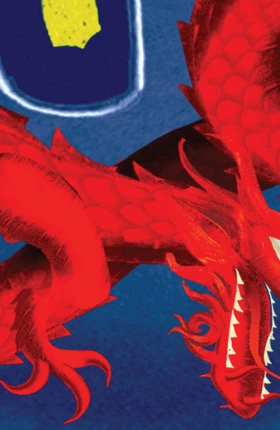The diversity of the Beyond BRIC markets means that OEMs must adopt a tailored go-to-market strategy while compensating for the subscale nature of each market. One top executive explained, “The big challenge for OEMs is finding a regional approach, within which they can treat markets individually; that is, working through country offices and identifying local success factors while ensuring economies of scale.” In this chapter, we explore each region—and unique regional approach—in depth.
Related Article
Beyond BRIC: Winning the Rising Auto Markets
Established markets offer slow or no growth, while the best opportunities in BRICs have been taken. Where next for automotive companies seeking fresh growth?
The ASEAN Nations: The Hot Spot
When considered as a strategic cluster, the ASEAN Nations represent both the most developed and most dynamic of the four clusters we studied. Within this cluster, Indonesia, Malaysia, and Thailand are the most important tier 1 markets.
As a cluster, all ten markets generated a combined 3.1 million in new-vehicle sales in 2012. By 2020, this annual total is projected to rise to 4.6 million, making this regional market larger than the Russian national market, which will have 4.4 million new-vehicle sales.
The ASEAN Nations’ great automotive potential is driven by the increasing wealth of its 600 million inhabitants; the cluster’s GDP per capita is projected to grow 3 percent annually from 2010 through 2020. Indonesia, with 1.7 million annual new-vehicle sales projected by 2020, will become the largest market not only in this cluster but also anywhere in the Beyond BRIC world. As one CEO of an international OEM told us, “Indonesia is certain to be one of the most important emerging markets for the automotive industry. It will be a key battleground of the future.”
Our projections for the new-vehicle market in this cluster are illustrated in Exhibit 1. We foresee the following:
- New-vehicle sales will grow 5 percent annually through 2020, when regional demand will be 4.6 million units.
- Indonesia’s annual growth rate of 8 percent will drive much of this expansion and cause this market to overtake the cluster’s current regional leader, Thailand, by 2020.
- The markets of Malaysia, Philippines, and Vietnam will also grow dynamically, from 4 to 5 percent annually.
Customers and Competition. The ASEAN Nations are characterized by diverse customer demands that are highly specific to the individual markets within the cluster.
- Pickup trucks are very popular in Thailand, holding a commanding market share of 39 percent.
- Indonesia is dominated by MPVs that are used largely to transport entire families; they have a market share of 51 percent. Critical local demands include high ground clearance, which is necessitated by regular flooding.
- In Malaysia, 27 percent of all cars are sedans, reflecting the social importance of owning a status symbol.
The varying demands mean that no single car model can be sold in large volumes across all the ASEAN markets. There is, however, a growing common demand across these markets for small-size cars. Sales in this segment are projected to reach about 1 million in Thailand and Indonesia by 2020, but market variations will remain a factor.
In Thailand, consumers pay reduced taxes of just 17 percent on “eco car” purchases—almost half the taxes paid for traditional cars. In Indonesia, by contrast, the government supports “low-cost green cars” by making their purchase entirely tax-exempt.
Despite the diverse consumer demands in the cluster, the ASEAN markets have a highly concentrated competitive landscape. They were among the first international targets of the Japanese OEMs, which still dominate with a market share above 60 percent. By contrast, European and U.S. OEMs remain marginal players in the cluster; each has annual new-vehicle sales well below 80,000.
Localization. Production has grown rapidly in the ASEAN Nations in recent years, yet it remains confined to a few markets.
- In the five years from 2007 to 2012, output rose 14 percent annually, growing from 2.1 million units to 4.1 million units.
- The cluster’s production capacity is concentrated almost entirely in the three major ASEAN markets. Thailand accounts for 59 percent of output, Indonesia for 24 percent, and Malaysia for 14 percent.
This concentration reflects the strong incentives for OEMs to localize value chains across the ASEAN markets.
- Manufacturing locally rather than importing can, as Exhibit 2 shows, lower the duties paid by OEMs by 40 to 80 percentage points.
- Thailand offers localizing companies an eight-year corporate tax holiday and an exemption from import tariffs on machinery.
Japanese companies dominate localization.
- Toyota, the market leader in the cluster, has established production facilities in all the main ASEAN markets, producing approximately 1.8 million units in 2012, including pickup models for global markets.
- While the supplier base has grown, local sourcing remains focused primarily on locally based multinational suppliers headquartered in Japan. The potential cost savings that could be achieved through truly local supply is estimated at about 20 to 30 percent.
Under these circumstances, Western OEMs considering localization are at a competitive disadvantage compared with established Japanese players.
The Emerging Mideast: The Heterogeneous Giant
The largest of the four strategic clusters of Beyond BRIC auto markets (as measured by projected new-vehicle sales for 2020) is also the most culturally diverse. The Emerging Mideast cluster incorporates Turkey on the European border, the markets of the Gulf Cooperation Council (GCC) in the south, Pakistan in the east—and many different (and different types of) markets in between.
It will have 700 million inhabitants—10 per-cent of the world’s population—by 2020. It will also gain increasing wealth as its GDP per capita is projected to grow 3 percent annually from 2010 through 2020. Yet these advantages must be considered alongside the cluster’s disadvantages: the effects of sanctions against Iran and latent political uncertainty following the Arab Spring.
While this is a heterogeneous regional cluster, with individual markets growing at widely differing speeds, the long-term potential of the region as a whole is beyond any doubt.
As one industry expert told us, “Markets like Turkey, Saudi Arabia, and Iran have to be on the list of every high-volume car manufacturer taking a long-term perspective.”
Our projections for the Emerging Mideast, illustrated in Exhibit 3, foresee the following:
- The Emerging Mideast will grow 5 percent annually though 2020, creating a market of 5.8 million new-vehicle sales—making it a larger market than Brazil, which is projected to have 5.2 million.
- Iran, Saudi Arabia, and Turkey will account for more than 60 percent of total sales in this cluster.
- Saudi Arabia, with a growing population and rising wealth, will expand fastest, growing 7 percent annually through 2020.
Customers and Competition. Diverse customer preferences across the Emerging Mideast cluster are shaped by the region’s widely varying cultures and population groups.
- Iranians opt for smaller A-segment cars; this segment accounts for 35 percent of the market.
- Turkish customers prefer the B- and C-segment cars, which are compacts and sedans. Combined, these two segments hold 54 percent of the Turkish market. At the same time, tax incentives for private buyers make commercial vehicles remarkably popular; these command a 17 percent share of the market.
- Saudi buyers prefer bigger cars such as SUVs and pickup trucks; combined, these two segments currently account for 35 percent of new-vehicle sales. Among these buyers, acute price awareness and functionality are the top areas of focus.
Especially in Saudi Arabia, status is a significant factor in shaping consumer choices. The vehicles most popular with consumers are spacious and affordable cars—and, increasingly, vehicles with status-enhancing features and accessories such as alloy rims, audio options, and tuned bumpers.
The competitive landscape varies across the markets in the cluster.
- Iran is a highly concentrated market: the traditional top brands—Kia, Peugeot, and Renault—captured more than 75 percent of the country’s market share in 2012. Multinational OEMs might retreat from Iran in response to U.S. sanctions; this could position Iran Khodro, a strong local CKD player, to gain further importance through its work with alternative partners such as emerging-market OEMs.
- Turkey is dominated by European players and their auto models.
- Consumers in Saudi Arabia are strongly influenced by Asian and U.S. brands.
Localization. The Emerging Mideast’s production capacity is concentrated in Turkey and Iran. The cluster’s total output of 2.4 million units in 2012 is projected to rise to 3.6 million in 2020, but the retreat of major international OEMs from Iran clouds the forecasts.
One probable consequence of the trends and developments is that Turkey will gain importance. A number of reasons make this likely:
- Turkey will build on progress already achieved through large government incentives, free trade with the European Union, and continuous public investments in infrastructure.
- Turkey’s automotive production clusters in Istanbul and Bursa are being developed systematically, and they already deliver significant output. (See Exhibit 4.)
- Led by Renault, Fiat, and Ford, many major OEMs have already established a presence in Turkey. Initially, many sought to use Turkey as an export hub for Europe, but more and more companies are also using their Turkish operations to reach the Mideast and North Africa.
Turkey’s potential is enhanced by a supply base that has grown alongside OEM development over the past decade. Today, the nation has more than 4,000 components manufacturers, and they produce almost all the critical automotive parts. Of these suppliers, about 70 percent are small or midsize enterprises.
The Andeans: The Mainstream Market
Framed by Brazil to the east and Mexico to the north, the Andeans form a fast-growing strategic cluster. The region’s cumulative demand there is expected to reach 2.9 million new-vehicle sales by 2020. Optimism for the Andeans is based on the cluster’s combined population of 197 million generating 3 percent annual growth in GDP per capita through 2020. This trend reflects the region’s overall macroeconomic stability and an obvious richness in natural resources. Of course, some potential risks exist in the form of political instability, as in Venezuela, and economic downturns, as in Argentina. But the overall positive trends seem solid.
The tier 1 markets of Argentina, Chile, and Colombia are expected to account for more than 75 percent of the total new-vehicle sales in the cluster in 2020. Our projections for the Andean car markets, as illustrated in Exhibit 5, foresee the following:
- Annual growth of 5 percent through 2020, will lead to 2.9 million new-vehicle sales. This would make the Andean car market nearly the size of the German market (at 3.6 million).
- Thriving Colombia, and its 11 percent annual growth, will be the main driver of this expansion. Argentina and Chile will grow only at 2 percent annually.
- Argentina will remain the largest market in the cluster, reaching 1 million in new-vehicle sales by 2020.
Customers and Competition. Demand is mostly homogeneous across the Andeans, making it possible for auto companies to succeed even with a limited product portfolio. As one top auto executive told us, “You can enter the Latin American market with one car model for several different countries.”
- Andean customers are generally price sensitive. As the number of people who can afford a car in these markets increases, these new consumers demand reasonably priced entry models and attractive financing options.
- In such a market, small and midsize cars (A- and B-segment cars) are universally popular and already account for about half of total new-vehicle sales in Argentina and Colombia. The B segment is led by cars such as the Chevrolet Aveo and Volkswagen Gol. (See Exhibit 6.)
- Alternative fuels such as compressed natural gas (CNG), which powers a world-leading 22 percent of Argentinean vehicles, are important but require only limited product adaptations. In most cases, these adaptations are made through after-sales solutions rather than through changes to a vehicle’s design.
GM’s Chevrolet brand dominates the Andean competitive landscape with a total market share of 18 percent. Its strength is spread across the main markets; it ranks first in Colombia and Chile, and second in Argentina.
Chevrolet’s strength is a serious challenge to new entrants, but new OEMs are increasing competition, particularly in the crucial entry-level segment, in which new entrants from France and South Korea have made rapid progress with affordable entry models.
Localization. In 2012, the Andeans produced 1.1 million units, approximately 70 percent of these in Argentina. Based on the varying tariff systems of the cluster’s individual markets, three main models exist for localization in the Andean markets. One major OEM uses all three, as illustrated in Exhibit 7.
- Argentina can serve as a regional producer. Leading OEMs such as Volkswagen, General Motors, and Ford have localized to serve sizable domestic demand and avoid tariffs ranging from 11 percent to 28 percent for imports from other Latin American markets.
- Small-scale local production (CKD) is better for Colombia, Ecuador, and Venezuela. Annual production volumes below 100,000 help meet the dual challenges of limited local demand and import tariffs that range from 16 to 40 percent.
- Chile, which has no tariffs, can be served entirely through imports. Japanese OEMs use their Asian production hubs to import cars to Chile. “We manufacture in Argentina but focus fully on imports in Chile,” one senior manager at a Japanese OEM told us.
Embracing these differentiated approaches, which respond to varying tariff systems and protectionist measures, offer a key to sustainable success in the cluster.
The North African Belt: The Gate to Africa
The North African Belt, ranging along the Mediterranean coast from Morocco in the west to Egypt in the east, is leading the transformation of an African automotive landscape that until recently was confined largely to South Africa.
Led by Algeria—the cluster’s largest, most resource-rich market—the North African Belt is expected to grow into a regional market of 1.2 million new-vehicle sales by 2020. Political instability remains a risk in the region, but the signs of economic development are positive. Morocco, where North Africa’s first automotive-manufacturing cluster is developing, offers one positive example.
Our projections for the North African Belt, illustrated in Exhibit 8, foresee the following:
- Annual growth of 4 percent will expand the cluster from 900,000 new-vehicle sales to 1.2 million by 2020.
- Algeria, Egypt, and Morocco will have clear dominance, accounting for 90 percent of the cluster’s sales by 2020 and leaving Tunisia and Libya more marginal markets.
Customers and Competition. North African customers have limited purchasing power and, thus, are highly sensitive to price. At the same time, they demand both quality and the durability needed to cope with poor road conditions. This has led to a market dominated by B-segment cars in Algeria (market share of 42 percent) cars and Morocco (30 percent share); whereas in Egypt, C-segment cars are popular (39 percent share). The mismatch between consumers’ spending power and their product requirements has stimulated a thriving used-car market over the past decades. But as salaries rise, partly as a reaction by governments to the Arab Spring, so does demand for new vehicles. Among the big sellers are budget cars such as Renault/Dacia’s Logan.
French carmakers dominate the competitive landscape. Across the cluster, they have a market share above 30 percent. Renault/Dacia has taken significant market share from established Asian OEMs by introducing budget cars like the Logan.
But their dominance faces a challenge. Growing competition from China is making the market tougher. Chinese companies like Chery, Great Wall Motors, and Changan Automobile are targeting Algeria and Egypt as key export markets. (See Exhibit 9.)
Localization. Significant investment by OEMs is expected to triple production volumes in the North African Belt from about 200,000 units to about 600,000 by 2015. But growth will be accompanied by a geographical shift within the cluster. Localization was formerly confined to Egypt, where import tariffs of more than 40 percent prompted OEMs to develop small-scale CKD and semi-knockdown (SKD) production facilities. But political instability in Egypt has made the country a much less attractive site for localization. Morocco is now emerging as the cluster’s dominant producer.
- This market has built a dynamic automotive ecosystem. Already, more than 200 companies employ about 70,000 people.
- Three other factors are also helping to drive localization in the market. Morocco boasts competitive labor costs; relative geographic proximity to Europe, Sub-Saharan Africa, and the Mideast; and heavy investment in infrastructure such as the expansion of the Tanger Med port. Renault has invested about €1 billion to build what will be Africa’s largest auto plant, which is expected to produce 400,000 units in Tangier by 2015.
- Supplier networks have also grown in Morocco and Tunisia. Global suppliers such as Yazaki, Sumitomo, and Delphi have chosen North Africa as a low-cost production base to serve Europe’s car factories.
Given these combined factors, the hub of the North African motor industry is shifting westward.

















